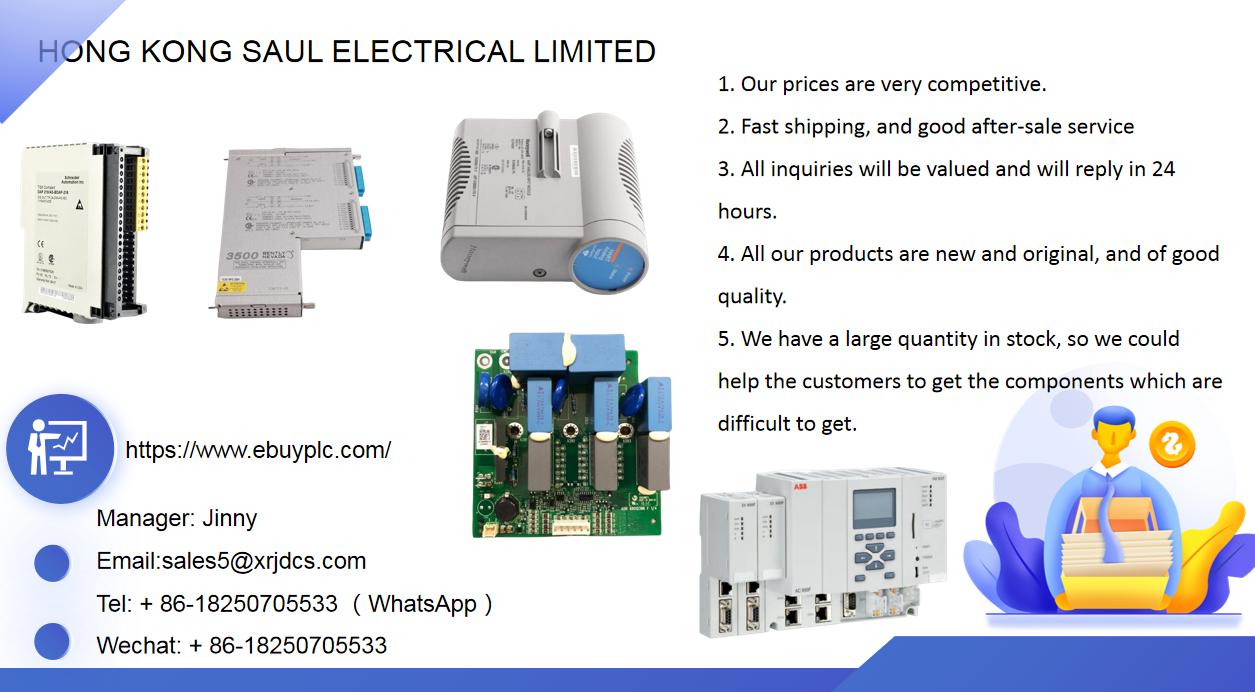0102030405
How can machine learning be applied to predictive maintenance?
2023-12-08
 Using the data collected from industrial Internet of things (iiot) devices, we can solve a wide range of maintenance problems, so as to achieve the ultimate goal of using machine learning (ML) to achieve a preemptive situation.
Using machine learning, combined with data collected from industrial Internet of things (iiot) devices, can improve processes, reduce costs and improve efficiency.
Predictive maintenance applies data and models to predict when equipment or assets fail. This approach can help companies proactively address situations that can lead to costly downtime or disruption by predicting failures.
Another way is to adopt the "shutdown repair" method, which is expensive for the company in many ways. Once the machine fails, it requires a lot of resources to restore the machine to normal compared with knowing and avoiding the problem in advance.
Maintenance type
There are three maintenance methods:
1. Passivity
Passive maintenance means that we only replace components when they fail. This method can lead to serious and expensive consequences, and it may even be dangerous according to the type of machine we are talking about. For example, if the machine in question is a jet engine, the failure may endanger the lives of hundreds of people and may destroy the reputation of a company.
2. Preventive
Pre planned maintenance is a slightly better method because problems are classified and handled regularly. However, you may change or maintain an operation before it actually needs to be performed, which will waste the company's resources. You don't know when a failure may occur, so you need to take a conservative approach to avoid unnecessary costs. For example, when you maintain a machine in advance, you are actually wasting the service life of the machine, using maintenance resources inefficiently, and usually increasing your business costs.
3. Predictability
It is ideal to be able to predict when the machine will fail, but it is difficult to predict accurately. In the best case, you will know when the machine will fail. You will also know which components will fail, so you can reduce the time spent diagnosing problems and reduce waste and risk in the process. When a machine failure is signaled by the prediction system, the maintenance plan should be as close to the event as possible to make full use of its remaining service life.
Problems that predictive maintenance can solve
Using the data collected from industrial Internet of things (iiot) devices, we can solve a wide range of maintenance problems. The ultimate goal is to use machine learning (ML) to achieve a preemptive situation.
Problems that can be solved include:
▲ early fault detection. In this case, we can detect the fault before the fault occurs by applying the sensor data to the machine learning algorithm.
▲ maximize the remaining service life. By predicting the time interval between component failures, we can apply maintenance or replace components at the right time.
▲ detect the fault point. This concept includes predicting when a component will fail and helps to better predict which stage of the component or machine will fail in its life cycle.
The more accurately we can predict when a component or machine will fail, the easier it is to achieve the highest productivity and efficiency throughout the organization.
Areas of improvement you will see include:
▲ risk reduction
▲ improve workplace safety
▲ more effective use of labor force
▲ predictable productivity level
▲ highest level of production income
▲ eliminate unnecessary maintenance tasks
▲ less resources are required to monitor machine performance
▲ maximize the service life of the machine and components
Predictive maintenance method
For predictive maintenance to succeed, there are three main aspects.
First, and perhaps most importantly, you need high-quality data. Ideally, historical data is expected to take into account past fault events. It is necessary to juxtapose the fault data with the static characteristics of the machine itself (including its average usage, general attributes and its operating conditions).
There's no doubt that you'll get a lot of data, so it's important to focus on the right data. Focusing on irrelevant data only messes things up and distracts attention from the most important places. (from IOT home) you should ask yourself, what kind of failure is likely to occur? What do you want to predict? What happens when a process fails? Will it happen soon, or will it slowly break down over time?
Finally, take a closer look at other related systems and components. Are there any other fault related components? Can their performance be measured? Finally, how often do these measurements take?
In order to obtain the best results, data collection takes a long time. High quality data can lead to more accurate prediction models. Any deficiency will only narrow the scope of possibilities and will not give you conclusive facts. Analyze the available data and ask yourself if it is possible to build predictive models based on these insights.
In general, we use two predictive modeling methods:
The regression model can predict the remaining service life of components. It tells us how long the machine will break down. In order for the regression model to work, historical data must be provided. Each event will be tracked, and ideally, all types of faults will be represented.
The regression model provides the assumption that the remaining life cycle of the system can be predicted based on its inherent (static) aspects and its current performance. However, if the system fails in many ways, a separate model must be created for each possibility.
The classification model can predict the machine failure in a specific time. We don't need to know in advance that the machine is going to fail, but we just need to know that the failure is about to happen.
Classification and regression models are similar in many aspects, but they are different in some aspects. First, classification focuses on a time window rather than an exact time. This means that the data required is not so strict.
working principle
Once modeled, predictive maintenance can be performed in the following ways:
The machine learning model collects sensor data and identifies events before faults based on historical fault data.
We preset the required parameters to trigger the alarm of potential faults. When sensor data exceeds these parameter thresholds, an alarm is initiated.
The function of machine learning is to detect abnormal modes other than normal system operation. With the help of high-quality data, we have a better understanding of these anomalies, and our ability to predict faults will be greatly improved.
In summary, machine learning supports the analysis of large amounts of data with minimal human intervention. Applying machine learning, combined with data collected from industrial IOT devices, can reduce costs, improve processes, reduce machine downtime, and optimize employee efficiency - which is the key to organizational success.
Using the data collected from industrial Internet of things (iiot) devices, we can solve a wide range of maintenance problems, so as to achieve the ultimate goal of using machine learning (ML) to achieve a preemptive situation.
Using machine learning, combined with data collected from industrial Internet of things (iiot) devices, can improve processes, reduce costs and improve efficiency.
Predictive maintenance applies data and models to predict when equipment or assets fail. This approach can help companies proactively address situations that can lead to costly downtime or disruption by predicting failures.
Another way is to adopt the "shutdown repair" method, which is expensive for the company in many ways. Once the machine fails, it requires a lot of resources to restore the machine to normal compared with knowing and avoiding the problem in advance.
Maintenance type
There are three maintenance methods:
1. Passivity
Passive maintenance means that we only replace components when they fail. This method can lead to serious and expensive consequences, and it may even be dangerous according to the type of machine we are talking about. For example, if the machine in question is a jet engine, the failure may endanger the lives of hundreds of people and may destroy the reputation of a company.
2. Preventive
Pre planned maintenance is a slightly better method because problems are classified and handled regularly. However, you may change or maintain an operation before it actually needs to be performed, which will waste the company's resources. You don't know when a failure may occur, so you need to take a conservative approach to avoid unnecessary costs. For example, when you maintain a machine in advance, you are actually wasting the service life of the machine, using maintenance resources inefficiently, and usually increasing your business costs.
3. Predictability
It is ideal to be able to predict when the machine will fail, but it is difficult to predict accurately. In the best case, you will know when the machine will fail. You will also know which components will fail, so you can reduce the time spent diagnosing problems and reduce waste and risk in the process. When a machine failure is signaled by the prediction system, the maintenance plan should be as close to the event as possible to make full use of its remaining service life.
Problems that predictive maintenance can solve
Using the data collected from industrial Internet of things (iiot) devices, we can solve a wide range of maintenance problems. The ultimate goal is to use machine learning (ML) to achieve a preemptive situation.
Problems that can be solved include:
▲ early fault detection. In this case, we can detect the fault before the fault occurs by applying the sensor data to the machine learning algorithm.
▲ maximize the remaining service life. By predicting the time interval between component failures, we can apply maintenance or replace components at the right time.
▲ detect the fault point. This concept includes predicting when a component will fail and helps to better predict which stage of the component or machine will fail in its life cycle.
The more accurately we can predict when a component or machine will fail, the easier it is to achieve the highest productivity and efficiency throughout the organization.
Areas of improvement you will see include:
▲ risk reduction
▲ improve workplace safety
▲ more effective use of labor force
▲ predictable productivity level
▲ highest level of production income
▲ eliminate unnecessary maintenance tasks
▲ less resources are required to monitor machine performance
▲ maximize the service life of the machine and components
Predictive maintenance method
For predictive maintenance to succeed, there are three main aspects.
First, and perhaps most importantly, you need high-quality data. Ideally, historical data is expected to take into account past fault events. It is necessary to juxtapose the fault data with the static characteristics of the machine itself (including its average usage, general attributes and its operating conditions).
There's no doubt that you'll get a lot of data, so it's important to focus on the right data. Focusing on irrelevant data only messes things up and distracts attention from the most important places. (from IOT home) you should ask yourself, what kind of failure is likely to occur? What do you want to predict? What happens when a process fails? Will it happen soon, or will it slowly break down over time?
Finally, take a closer look at other related systems and components. Are there any other fault related components? Can their performance be measured? Finally, how often do these measurements take?
In order to obtain the best results, data collection takes a long time. High quality data can lead to more accurate prediction models. Any deficiency will only narrow the scope of possibilities and will not give you conclusive facts. Analyze the available data and ask yourself if it is possible to build predictive models based on these insights.
In general, we use two predictive modeling methods:
The regression model can predict the remaining service life of components. It tells us how long the machine will break down. In order for the regression model to work, historical data must be provided. Each event will be tracked, and ideally, all types of faults will be represented.
The regression model provides the assumption that the remaining life cycle of the system can be predicted based on its inherent (static) aspects and its current performance. However, if the system fails in many ways, a separate model must be created for each possibility.
The classification model can predict the machine failure in a specific time. We don't need to know in advance that the machine is going to fail, but we just need to know that the failure is about to happen.
Classification and regression models are similar in many aspects, but they are different in some aspects. First, classification focuses on a time window rather than an exact time. This means that the data required is not so strict.
working principle
Once modeled, predictive maintenance can be performed in the following ways:
The machine learning model collects sensor data and identifies events before faults based on historical fault data.
We preset the required parameters to trigger the alarm of potential faults. When sensor data exceeds these parameter thresholds, an alarm is initiated.
The function of machine learning is to detect abnormal modes other than normal system operation. With the help of high-quality data, we have a better understanding of these anomalies, and our ability to predict faults will be greatly improved.
In summary, machine learning supports the analysis of large amounts of data with minimal human intervention. Applying machine learning, combined with data collected from industrial IOT devices, can reduce costs, improve processes, reduce machine downtime, and optimize employee efficiency - which is the key to organizational success.








